12 Top-Rated Tourist Attractions in Israel and the Palestinian Territories
Home to some of the world's most famous historic sites, Israel and the Palestinian Territories are often thought of as simply a pilgrimage destination. After all, this is where some of the main events for those of the Jewish, Muslim, and Christian faiths is said to have happened. But for travelers not seeking out religious highlights in the churches, synagogues, and mosques, there are plenty of other attractions. The Dead Sea is a bizarre natural wonder where you can't sink. The Galilee region's natural beauty ticks all the boxes for those who want to hike in nature. And the Negev desert's raw and rocky landscapes are ripe for adventure seekers looking for some dusty action. Sure, the religious sites here will always be the main draw card for a visit, but scratch below the surface and you'll find there's so much more.
1 Jerusalem
Aching with the weight of history, Jerusalem has one of the world's most recognisable skylines, with the golden helmet of the Dome of the Rockglinting above the caramel-colored stone of the old city. This ancient city holds deep religious significance for all those of the monotheistic faiths, and the labyrinthine alleyways in the old district are packed with religious sites and mind-boggling history. Dodge the crowds of pilgrims and take a walk along the walls that still wrap around the old city. Explore the city's fabulous museums. And immerse yourself in the mazy lanes, which kings, Crusaders, and conquerors have all fought over. Jerusalem enchants and confounds in equal measures.
2 Haifa
Jerusalem is all history. Tel Aviv is about modern dining and café culture. And Haifa just does its own thing. This lovely northern city's main highlight is the Baha'i Gardens which tumble down the hillside towards the sea in a series of immaculate green terraces. They're a must-do for all travelers here, but Haifa's big attraction for many visitors is that it's the perfect base to explore the north. Akko, Mount Carmel, and Caesarea are right on the doorstep, and even Nazareth and Megiddo could be easily done as a day trip from here. Hands down the most easygoing city in the country, Haifa should be part of everyone's itinerary.
- Read More:
- 14 Top-Rated Tourist Attractions in Haifa
3 Nazareth
Forever linked to the Bible, Nazareth is one of the main pilgrimage destinations in the country. The holy sites here are some of the most important in the world for those of the Christian faith. This is where the Annunciation took place, and where Jesus Christ was brought up, and the center of town is home to important churches that celebrate this history. Don't miss the Basilica of the Annunciation and exploring the vibrantbazaar area, which adds some modern bustle to the twisty, old city lanes.
- Read More:
- 8 Top-Rated Tourist Attractions in Nazareth
4 Jaffa
A picturesque vision of honey-colored stone, Jaffa is a chilled-out little harbor town with an illustrious past as a major port. Made for aimless wandering and home to an excellent flea market, Jaffa provides an old-world style respite from the modern thrum of Tel Aviv next door. The muddle of lanes leading down to the sea, where once the great ships of the ancient Mediterranean empires docked, are now a haven for café-hopping and lazy afternoon sightseeing. All who visit soon succumb to its charms.
5 The Dead Sea
The lowest point on earth and one of the world's most wacky natural wonders, the Dead Sea is the mineral-rich and overly salty sea where no one can sink. Locked in by the cliffs of the Great Rift Valley, this bizarre body of water (where natural buoyancy occurs due to the high salt content) has been wowing travelers for centuries. Take a float - you can't really sink - and you'll be won over as well.
6 Bethlehem
A major Christian pilgrimage center, Bethlehem is home to the Church of the Nativity, built over the site where Jesus Christ is said to have been born. The stately church complex with its far-reaching historical significance, and the busy market vibe of the bazaar make this the number one highlight of the West Bank. Although many travelers only come here as a day trip from Jerusalem, the town is an excellent place to base yourself for excursions into the surrounding countryside.
7 Timna Park
Raw, rugged desert scenery at its best; Timna Park, near Eilat, is one of the most beautiful corners of the Negev. The landscapes here have a visceral quality, which enchant all who visit, with towering cliffs and surreally-shaped boulders set between vast tracts of multi-hued sand. Timna's copper mining history (which stretches back to the ancient Egyptians) is also worth exploring; the area is full of ancient mine shafts and rock inscriptions.
- Read More:
- 11 Top-Rated Tourist Attractions in Eilat
8 Sea of Galilee
Gorgeous countryside and bags of history, the shoreline that wraps around the Sea of Galilee is packed full of attractions. Whether you're here to visit the churches of Tabgha, where Jesus delivered the Sermon on the Mount and carried out much of his preaching, or you just want to soak in the hot pools near Tiberias and do some hiking, this beautiful region is a major highlight of any trip. Don't miss taking a swim in the sea itself and soaking up the views across the lake on a hillside hike.
9 Masada
This mountaintop fortress, overlooking the Dead Sea, is home to incredible vistas and some fascinating history. This is where King Herod's once mighty palace stood and where the Zealots took their last stand against the Roman Legions. If you're up for a hike, the winding Snake Path is the perfect way of reaching the top with excellent panoramas all the way. Otherwise, take the cable car and see the views without the sweat.
- Read More:
- 8 Top-Rated Tourist Attractions in Masada
10 Mar Saba Monastery
Mar Saba Monastery is an architectural marvel of the Byzantine age, precariously snuggled into the cliff face as if it had sprouted organically out of the sheer rock. Although female travelers are not allowed to actually enter the monastery, the view is enough of a reason to visit, with the metal domes glinting in the sun between the rock face. An easy day trip from Bethlehem or Jerusalem, Mar Saba Monastery is one of the Holy Land's great historic sites.
11 Beit Shean
In a country full of ruins, Beit Shean stands out from the crowd for its excellent preservation. Here, you can get a real feel for the life of a Roman and Byzantine town with its colonnaded streets, well-restored theater, and extensive bath house remains. Stroll the once mighty streets, explore the extensive ruins, and sit in the theater where the Roman city's cultural life was played out. It's a fabulous slice of the ancient world that any history lover should see.
- Read More:
- Exploring Beit Shean: A Visitor's Guide
12 Akko
Wrapped up in Crusader history, Akko (Acre to the Crusaders) has a mellow harbor full of colorful, bobbing fishing boats; a vibrant bazaar crammed with spice, produce, and interesting artisan products; and a truckload of history to boot. The city walls, old khans (caravanserais), andfort remnants speak of another age, when this town was the center of the empire. One of the most fun towns to explore (who doesn't like a secret tunnel?), Akko is a great mix of historic sites and modern life.
Israel Travel Guide
The Middle Eastern state of Israel lies in an area which is holy ground for the three great monotheistic religions - Judaism, Christianity and Islam. Judaism and Christianity originated here, and Jerusalem is Islam's most important shrine after Mecca and Medina. The Holy Land is thus of supreme significance to the adherents of these three religions.
Although Israel was never a great power and for many centuries had no independent existence as a state, it lies at a focal point of Middle Eastern history and is richly stocked with remains of a long and eventful past reaching far back into prehistory - to the 8th millennium b.c., when Jericho was one of the world's earliest urban settlements, and even farther back to the remote times when Palaeolithic man began laboriously developing his primitive culture.
In this relatively small area a whole succession of peoples have left evidence of their existence - the people of Jericho, the Canaanites, the Israelites of the Old Testament, Greeks, Romans, Byzantines, Arabs, European crusaders, Mamelukes, Turks and finally the Christians from Europe and Russia who in more recent centuries have built their churches and religious houses in many places in this country.
Whether a tourist comes to Israel as a pilgrim, as an art-lover or as one interested in history or in the problems of our own day, he will find much to fascinate him
Whether a tourist comes to Israel as a pilgrim, as an art-lover or as one interested in history or in the problems of our own day, he will find much to fascinate him
More Destinations and Attractions
15 Top-Rated Tourist Attractions in Jerusalem
The most contested city on earth is also one of the most beautiful. The scope of its history is staggering, and its vital place in the traditions of all three monotheistic faiths has led to it being fought over continually through the centuries. This is the heart of the Holy Land; where the Jews raised the First Temple to keep the Ark of the Covenant safe, where Jesus was crucified and rose again, and where the Prophet Muhammad ascended to heaven to receive God's word. For believers, a visit to Jerusalem is a pilgrimage to one of the most sacred sites in the world. The number of sights here can be baffling for first time visitors, but luckily most of the top tourist attractions are secreted within the lanes of the compact Old City district. With so much to see, the best way to tackle a trip here is to decide on a few key attractions that are must-dos and break your sightseeing down into sections of the city. Don't try to do too much and wear yourself out. It would take a lifetime to see everything that Jerusalem offers.
1 Haram Al-Sharif (Temple Mount)
Follow in the footsteps of centuries of pilgrims, and enter one of the holiest sanctuaries on earth. Lauded by Jews, Christians, and Muslims, this is the site where Abraham (father of all three monotheistic faiths) is said to have offered his son up as a sacrifice to God, where Solomon built the First Temple for the Ark of the Covenant, and where the Prophet Muhammad is said to have ascended to heaven during his early years of preaching Islam. It's a place of deep significance (and contention over ownership) for those of faith. The wide plaza, above the Old City, is centered around the glittering Dome of the Rock, which is Jerusalem's most iconic landmark. Beneath the golden dome is the sacred stone both Jews and Muslims believe to be where Abraham offered his son to God and where Muslims also believe the Prophet Muhammad began his journey to heaven. The southern side of the mount is home to the Al-Aqsa Mosque, said to be one of the oldest mosques in the world.
Hours: Open Sat-Thu 7.30am-10am & 12.30pm-1.30pm (Oct-Mar); Sat-Thu 7.30am-11am & 1.30pm-2.30pm (Apr-Sep).
Admission: Free (non-Muslims must enter from the Western Wall gate)
Location: Entry from Western Wall Plaza, Old City
2 Wailing Wall and Jewish Quarter
The Wailing Wall (or Western Wall) is the surviving retaining wall of Jerusalem's First Temple. Commonly called the Wailing Wall due to the people's laments for the loss of the temple in AD 70, it is now the holiest site in Judaism and has been a place of pilgrimage for the Jewish people since the Ottoman era. The Jewish Quarter of the Old City runs roughly from the Zion Gate east to the Western Wall Plaza. This part of the Old City was destroyed during the Israeli-Arab fighting in 1948 and has been extensively rebuilt since 1967. A major highlight here for history fans is theJerusalem Archaeological Park, at the southern end of the Western Wall Plaza, where archaeologists have unearthed fascinating remnants of old Jerusalem. The Western Wall Tunnels, which take you under the city, back to the level of the original city, are also not to be missed. Jewish Quarter Street (RehovHaYehudim) is the main lane of the district, and veering off this road onto the surrounding side streets, there are a cluster of interesting synagogues that can be visited.
Location: Western Wall Plaza, Old City
3 Church of the Holy Sepulchre
For Christian pilgrims, the Church of the Holy Sepulchre is Jerusalem's holiest site and is said to have been built on the site where Jesus was crucified. The site for the church was picked by Empress Helena - mother to Constantine the Great during her tour of the Holy Land. She was the one to announce to the Byzantine world that this spot was the Calvary (or Golgotha) of the gospels. The original church (built in 335 AD) was destroyed by 1009, and the grand church you see now dates from the 11th century. Although often heaving with pilgrims from across the world, the church interior is an opulently beautiful piece of religious architecture. This is the ending point for the Via Dolorosa pilgrimage and the last five Stations of the Cross are within the Church of the Holy Sepulchre itself. The interior contains various holy relics, and the different quarters inside the church are owned by different Christian denominations.
Hours: Open daily 4.30am-8pm
Admission: Free
Location: Christian Quarter, Old City
4 Armenian Quarter
Running south from the Citadel, Armenian Patriarchate Road is the main street of the Old City's tiny Armenian Quarter. Within the narrow lanes here are the St. James Cathedral and St. Mark's Chapel, which receive much fewer visitors than others in the Old City. Armenians have been part of Jerusalem's community for centuries, first arriving in the city during the 5th century. Many more arrived during the Ottoman era and after the Armenian massacres in Turkey during the early 20th century. This is the Old City's most tranquil corner to explore and a good place to wander if the press of pilgrims gets too much.
Location: Old City
5 Via Dolorosa
For many Christian visitors, the Via Dolorosa (Way of Sorrow) is the highlight of a visit to Jerusalem. This walk follows the route of Jesus Christ after his condemnation as he bears his cross towards execution at Calvary. The walk is easily followed independently but if you're here on a Friday, you can join the procession along this route led by the Italian Franciscan monks. The course of the Via Dolorosa is marked by the fourteen Stations of the Cross, some of which are based on the Gospels' accounts and some on tradition. The walk begins in the Muslim Quarter of the Old City on Via Dolorosa Street (1st station, near the intersection with HaPrakhim Street) from where you follow the street west through eight stations until you reach the 9th station at the Church of the Holy Sepulchre where the last five stations are. Of particular interest along the way is the Chapel of the Flagellation (2nd station), built on the site where Jesus is believed to have been flogged.
Hours: The Franciscan Fathers lead Via Dolorosa processions every Friday throughout the year starting at 3pm (Oct-Mar) and 4pm (Apr-Sep) from the 1st station.
Location: Via Dolorosa Street, Old City
6 Citadel (Tower of David) and surrounds
The Citadel, popularly known as the Tower of David, actually has no connection with David, having been erected by King Herod to protect the palace he built in approximately 24 BC. His original citadel had three towers named after his brother Phasael, his wife Mariamne, and his friend Hippicus. After Titus' conquest of the city in AD 70, the Romans stationed a garrison here, but later the citadel fell into disrepair. It was successively rebuilt by the Crusaders, Egypt's Mamelukes and Turks, during their years of reign over Jerusalem. The building you now see was built in the 14th century on the foundations of the original Phasael Tower. Inside is theTower of David Museum, which relays the story of Jerusalem. While here, make sure you climb up to the rooftop for one of Old City's best views. There is also a Sound and Light show here in the evenings.
Hours: Tower of David Museum, Sun-Thu 9am-4pm & Fri-Sat 9am-2pm
Admission: Tower of David Museum - adult 36NIS, student 25NIS, child 18NIS; Sound & Light Show- adult 55NIS, student & child 45NIS
Location: Jaffa Gate, Old City
Official site: www.towerofdavid.org.il
7 Christian Quarter
The Christian Quarter of the Old City runs north from the Jaffa Gate and is centered around the Church of the Holy Sepulchre. Within this tangle of alleyways are some of the Old City's most popular tourist souvenir souks and a whole caboodle of churches that are well worth exploring. ProtestantChrist Church (Omar ibn al-Khattab Square) has a quirky museum with interesting document exhibits and a decent cafe to rest your weary Old City-plodding feet. The Ethiopian Monastery, squeezed into the corner of The Church of the Holy Sepulchre's courtyard, contains interesting frescoes portraying the Queen of Sheba's Jerusalem visit. The Lutheran Church of the Redeemer (Muristan Road) is where you come to climb the bell tower for incredible Old City views. And the Church of St. John the Baptist (off Christian Quarter Street) is worthy of a visit as it's Jerusalem's oldest church.
Location: Old City
8 Muslim Quarter
The most bustling and alive district is the Muslim Quarter, which is home to the best souk shopping in the Old City. This district roughly runs fromDamascus Gate through the northeast chunk of the Old City. There are plenty of fine surviving remnants of Mameluke architecture lining the streets here including the 14th century Khan al-Sultan (Bab Silsila Street) where you can climb up to the roof for excellent views across the higgledy-piggledy lanes. If you wander down Antonia Street you'll come to the beautiful Crusader-built St. Anne's Church (believed to be built on top of the site of the house of the Virgin Mary's parents) and the Pool of Bethesda next door.
Location: Old City
9 Mount of Olives
Overloaded with churches and home to the oldest continually usedcemetery in the world, the Mount of Olives holds particular interest to religious pilgrim travelers to Jerusalem, but even the non-devout can appreciate the spectacular Old City panoramas from the peak. This sacred hill is believed to be the place where God will begin rising the dead on Judgement Day. For Christian believers, this is also where Jesus ascended to heaven after his crucifixion and subsequent resurrection. The Church of the Ascension on the top of the mount dates from 1910 and has the best views across Jerusalem. Walking down the slope, you come to the Church of the Pater Noster built next to the site where, according to tradition, Jesus instructed his disciples. Further down, the Church of Dominus Flevitis claimed to be built over the site where Jesus wept for Jerusalem, and further along is the onion-domed Russian Church of Mary Magdalene. TheGardens of Gethsemane (where Jesus was arrested) and the Church of All Nations are next, while the Tomb of the Virgin Mary is the last big attraction on the Mount of Olives.
10 Mount Zion
Mount Zion (the small hill immediately south of the Old City's Zion Gate) is home to Jewish and Muslim shrines as well as a number of churches. Since the Byzantine Age, Mount Zion has been revered as the place where Christ celebrated the Last Supper and where the Virgin Mary spent the last years of her life, according to some Christian traditions (another tradition says her last days were spent in Ephesus in Turkey). For Jews, Mount Zion's importance stems from this being the place of King David's Tomb. If you climb up the stairs from the tomb's courtyard you'll come to the Last Supper Room, which has served as both church and mosque throughout its long history. The Church of the Dormition nearby is where the Virgin is supposed to have died, while just to the east is the Church of St Peter of Gallicantu where Peter is said to have denied Jesus.
Location: Exit the Old City from Zion Gate
11 Old City Walls
The Old City fortifications date from the Ottoman period, and nine magnificent gates at junctions within the wall's length lead into the Old City. The Damascus Gate is one of the most famous. Lions' Gate(sometimes called St.Stephen's Gate) leads onto the Mount of Olives outside the city walls. Zion Gate is the main entry into the Jewish Quarter, while Jaffa Gate is the main passageway for the Christian Quarter. Walking the wall ramparts is a wonderful way to experience the Old City. There are two sections that can be walked on: Jaffa Gate heading north to Lion's Gate, or Jaffa Gate heading south to Dung Gate.
Location: Exit Old City from Damascus Gate
12 East Jerusalem
Outside the Old City's Damascus Gate is Jerusalem's mostly Arab neighbourhood of East Jerusalem. Just to the east of the gate, within the gardens at the foot of the wall, is Solomon's Quarries, a cave system that extends under the Old City. According to ancient tradition, the stone for Jerusalem's First Temple was quarried from here. The cave is also known as Zedekiah's Grotto as in Jewish tradition, Zedekiah, the last king of Judah, hid here from the Babylonian forces in 587 BC. Slightly east from here (along Sultan Suleyman Street) is the Rockefeller Archaeological Museum. Inside are exhibits from the Stone Age right up to the 18th century. If you're short on time, some of the highlights of the collection are the skeleton unearthed on Mount Carmel known as the Carmel Man in theSouth Gallery, the 6th century BC Lachish letters in the North Gallery, and the ornately carved beams from the Al-Aqsa Mosque in the South Room.
If you walk down Nablus Road, you'll come to the Garden Tomb, which dates from the Roman or Byzantine period. Found and identified as Christ's tomb by General Gordon in 1882, some Protestant Christians still believe that this is the true site that Christ was buried and rose again. Heading north along Nablus Road is the French Dominican Monastery of St. Stephen where its namesake, the first Christian martyr, is believed to have been stoned to death. Veer off onto St. George Street from here, and you'll come to the site of the Mandelbaum Gate. Between 1948 and 1967 it was the only crossing-point between the Israeli and Jordanian sectors of Jerusalem. The site is marked with a plaque. Also on St. George Street, is the Museum on the Seam; a one-of-a-kind (in Israel) contemporary art museum that exhibits works dealing with social commentary on human rights and conflict.
Location: Exit Old City from Damascus Gate
13 Central City Sites
From the Old City's Jaffa Gate, you enter Jerusalem's modern central city district with Jaffa Road running northwest to Bar Kochba Square and Zion Square. Northeast from Bar Kochba Square, you reach the Russian Compound dominated by the green-domed Russian Orthodox Cathedral. This area grew up in the late 19th century as a large walled complex for Russian pilgrims. On the northeast side of the complex, were the Russian consulate and a hospice for women; to the southwest were a hospital, the mission house, and a large hospice for men that lies beyond the Cathedral. The buildings are now occupied by various government institutions. North from here is Ethiopia Street where you'll find the Ethiopian Church. The reliefs of lions above the doorway recall the style of Lion of Judah borne by the Abyssinian dynasty, which traced its origins back to the Queen of Sheba.
Further north from Ethiopia Street is the Mea Shearim district, home to a community of ultra-orthodox Jews. If you'd like to explore this area, be aware that modest dress (covering arms and legs) is mandatory, and taking photographs of inhabitants is not allowed. The people of Mea Shearim still wear their old East European dress and speak mostly Yiddish. Some extreme groups refuse to recognise the state of Israel because it was not established by the Messiah and regard themselves as a ghetto of true orthodoxy within the Jewish state.
South from Jaffa Road is the Time Elevator (Hillel Street), a child-friendly introduction to Jerusalem's history, and the Museum of Italian Jewish Art & Synagogue with an extensive collection of Judaica. Running west fromZion Square on Jaffa Road is the pedestrianized Ben Yehuda Street; Jerusalem's main vortex for dining and shopping.
Location: Exit Old City from Jaffa Gate
14 Israel Museum
Opened in 1965, this complex of museums is the only place in the country that collects and displays both archaeological finds and art. The Shrine of the Book building displays Israel's portion of the Dead Sea Scrolls (the rest of the scrolls are displayed in Amman's Citadel Hill museum, Jordan), which were unearthed in the Dead Sea area during the 1940s. In the main building of the complex, the Judaica wing has an impressive display of sacred Jewish art and ethnographic displays from Jewish life in various countries. The archaeological wing contains fascinating exhibits from the early days of settlement here through to the Romans. The Art wing has a good collection of works by Israeli painters as well as pieces by Gauguin, Renoir, and Van Gogh.
Hours: Open Sat-Mon & Wed-Thu 10am-5pm, Tue 4pm-9pm
Admission: adult 50NIS, students 37NIS, child 25 or free every Tue & Sat
Location: Givat Ram district, West Jerusalem
Official site: http://www.english.imjnet.org.il/
15 Kidron Valley
The Kidron Valley lies between the Mount of Olives and Mount Zion and is one of the oldest areas of Jerusalem. Both Jews and Muslims believe that the Last Judgement will take place here; a rope will extend from the battlements of the Temple Mount, over the valley to the Mount of Olives, and the righteous will cross over, supported by their guardian angels, while the sinners will be cast down into damnation. Archaeological excavations here have uncovered a settlement that dates back more than 4,000 years. The archaeological site is known as the City of David, and archaeologists are still working here. Area G is the oldest part of the site, dating from the 10th century BC. From here, you can walk down into the tunnels known asWarren's Shaft and Hezekiah's Tunnel and proceed onto the Pool of Siloam and Shiloach Pool, which some people think may be the site where Jesus performed the miracle of healing a blind man.
Location: Exit Old City from Zion Gate
Other Notable Attractions
Mehane Yehuda Market
Jerusalem's Mehane Yehuda Market is fresh produce heaven. Here you'll find all the foodie souvenirs you could want, as well as some of the city's best eating. It's great fun to just dive into the alleys (all bearing names of their speciality produce) and get caught up in the whirl of shopping.
Location: off Jaffa Road
Nahlaot District
This small district, just south of the central city, is a labyrinth of lanes, which dates from the mid 19th century. There are many interesting synagogues among its alleys and some fine examples of preserved historic houses. In particular, Ades Synagogue (Shilo Street) is worthy of a visit.
Location: Central City
Knesset
The Knesset (Israeli Parliament) was built in 1966. Near the entrance is a 5-m-high bronze Menorah (seven-branched candlestick), which was a gift from the British parliament and is decorated with 29 reliefs of events in Jewish history. The interior is decorated with mosaics and tapestries by Marc Chagall.
Hours: Open Sun & Thu 8.30am-2.30pm (free guided tours)
Admission: Free, passport required for entry
Location: Givat Ram district, West Jerusalem
Bible Lands Museum
This interesting museum is devoted to exhibits that showcase the history of the Holy Land, with displays covering the timeframe of 6,000 BC up until the Byzantine era.
Hours: Open Sun-Tue & Thu 9.30am-5.30pm; Fri-Sat 10am-3pm
Admission: adult 40NIS, child/student 20NIS
Location: Givat Ram district, West Jerusalem
Monastery of the Cross
According to legend, the massive fortress-like bulk of the medievalMonastery of the Cross is built on the site where the Prophet Lot lived. The trees he is said to have planted in the surrounding area are also believed to have provided the wood for Christ's cross. In Greek Orthodox tradition, a church was first founded here by the Empress Helena. Georgian monks controlled the church until the 18th century when it passed back into the hands of Jerusalem's Greek Orthodox community. Until a few decades ago, the monastery lay well to the west of Jerusalem, but the city's creeping expansion has now surrounded it.
Location: Rehavia district, West Jerusalem
Yad Vashem (Hill of Remembrance)
Israel's major Holocaust memorial is Yad Vashem. In the main building, theHall of Remembrance, the names of the Nazi death camps are set into the floor and an eternal flame burns in memory of the dead. Opening off the main hall are a room containing victim names, a photographic exhibition, the extremely moving children's memorial, and an art museum with work produced by inmates from the concentration camps. The extensive surrounding grounds hold numerous works of sculpture and memorials.
Hours: Open Sun-Wed 9am-5pm, Thu 9am-8pm, Fri 9am-2pm
Admission: Free
Location: West Jerusalem
Official site: www.yadvashem.org
Herzl Museum
Mount Herzl commemorates the founder of Zionism. The remains of Theodor Herzl, who died in Austria in 1904, were brought to Israel in 1949, a year after the foundation of the independent Jewish state for which he advocated, and buried in a free-standing sarcophagus on Mount Herzl. Near the main entrance is the Herzl Museum with a reconstruction of Herzl's study and library. The large park also contains the graves of Herzl's parents and several leading Zionists.
Location: West Jerusalem
Ein Kerem
Ein Kerem Road in Jerusalem runs down into the Ein Kerem Valley where, according to Christian tradition, the village of Ein Kerem was the birthplace of St. John the Baptist. The Franciscan Friary of St. John here was built in the 17th century over the Grotto of St. John (believed to be his birthplace). In the center of the village is the Church of the Visitation with beautiful frescoes.
Abu Ghosh
This Arab village is dominated by a Crusader church that has belonged to the Lazarists since 1956. With its 4-m-thick walls the three-aisled church is fortress-like and is full of Crusader character. Abu Ghosh is also home to the Church of Our Lady of the Ark of the Covenant, which is believed by some to stand on the site where the ark was kept before being transferred to Solomon's temple.
Location: 13 km west of Jerusalem
Latrun
Latrun Monastery was built in 1927 by French Trappist Monks. Until recent times, Latrun was of strategic importance, and during the British Mandate period, UK authorities had a fortified police post here. The monastery grounds are beautifully laid out. In the garden, there are a collection of late classical and early Christian capitals and reliefs.
Location: 28 km west of Jerusalem
Bethany
Said to be the Bethany from the New Testament where Jesus raised Lazarus from the dead, Bethany has two religious monuments in the village to commemorate this event: the Church of Lazarus and Tomb of Lazarus.
Beit Guvrin
Beit Guvrin is a cave system used as living quarters by hermetic monks during the Byzantine period. Nearby, the important archaeological park ofTell Maresha has uncovered finds from the 3rd century onwards.
Sorek Caves
If all the history is getting too much, escape to the Sorek Caves, which were discovered in 1967. There are stalactites and stalagmites galore within the cave system here.
Hours: Open Sat-Thu 8.30am-5pm, Fri 8.30-3pm
Admission: adult 25NIS, child 13NIS
Location: 20 km west of Jerusalem
History
The first settlement in the Jerusalem area probably dates back to the 20th century BC. In 997 BC, King David and the Israelites arrived, and his son (Solomon) constructed the first temple in 950 BC. In 587 BC, the town was captured by Nebuchadnezzar and many of the inhabitants were carried off to Babylon. After the end of the Babylonian Captivity, in 520 BC, the Second Temple was built.
In 332 BC, Jerusalem came under Greek rule and was increasingly Hellenised. The desecration of the Temple by Antiochus IV sparked off the Maccabean rising of 167 BC. Under the Maccabees and the Hasmoneans, the town expanded westward on to Mount Zion. In 63 BC, it passed into Roman control, and in 37 BC, Herod became king of the Jews. He rebuilt and embellished the Temple platform and equipped the city with palaces, a citadel, a theater, a hippodrome, an agora, and other buildings on the Hellenistic and Roman model. After his death in 4 BC, Jerusalem became the city of the high priests under Roman procurators. From AD 41 to 44, it was ruled by Agrippa I, who extended the city northward, building the Third (North) Wall. In AD 70 Jerusalem was destroyed by Titus, and then again by Emperor Hadrian, in AD 132, who banned Jews from the city and renamed Jerusalem Aelia Capitolina.
Jerusalem became a Christian city in 326, when the Emperor Constantine and his mother Helena built a number of churches. This era came to an end when Jerusalem was captured by the Persians in 614. It was recovered by the Byzantines in 627, but in 638 it was conquered by the armies of Islam. Thereafter the Omayyad Caliphs built the Dome of the Rock and the El-Aqsa Mosque.
A further period of Christian rule began in 1099 with the conquest of the city by the Crusaders, who built many churches, palaces, and hospices. Islam returned to Jerusalem, however, when Saladin captured the city in 1187, and it remained in Muslim hands under the Mamelukes (1291- 1517) and the Ottomans (1519-1917), who built the present town walls (1537). In the 19th century the Christian powers of Europe, which had supported the Turkish Sultan against the Egyptian ruler Ibrahim Pasha, gained increasing influence from 1840 onwards, and built churches, schools, hospitals, and orphanages. The Pope re-established the Latin Patriarchate, which had originally been founded in 1099, but was dissolved in 1291.
Jews had begun returning to live in Jerusalem in significant numbers since the 13th century. In 1267, Rabbi Moshe Ben Nahman Ramban (Nachmanides) founded a synagogue. In 1488, Jews from Egypt settled in Jerusalem, and they were followed by Sephardic Jews from Spain offered refuge from the Spanish Inquisition by the Ottoman Sultan.
In December 1917, British forces under General Allenby entered the city, and on July first 1920, it became the seat of the British High Commissioner in the mandated territory of Palestine. The United Nations resolved, in 1947, that Palestine should be divided between the Arabs and the Jews and that Jerusalem should be internationalized. After the end of the British Mandate in 1948, Israeli and Jordanian forces fought for control of the city, and it was partitioned under a cease-fire agreement in 1949. In 1950, the Israelis made West Jerusalem capital of their state and after the Six Day War of 1967 they annexed East Jerusalem. There was further trouble in 1980, when the Israelis declared Jerusalem, including the Arab Old City, to be the "eternal capital of Israel".
 Jerusalem Map - Attractions
Jerusalem Map - Attractions123456666
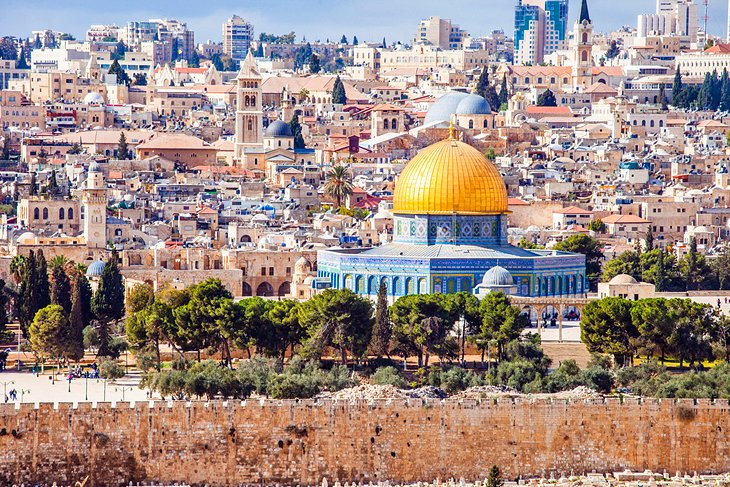
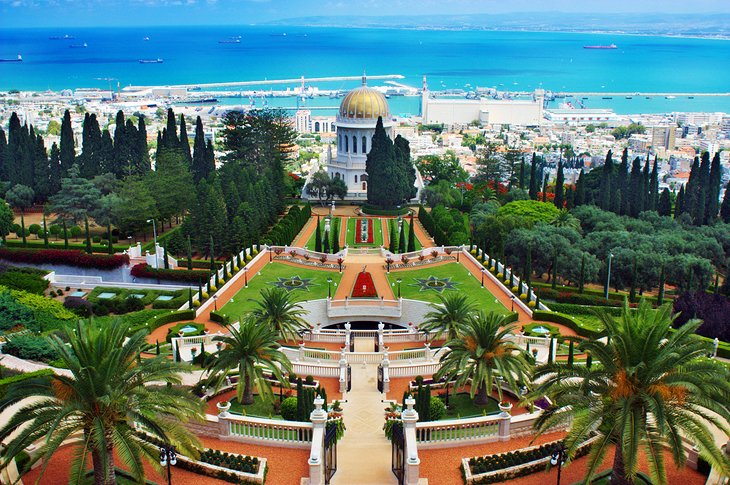
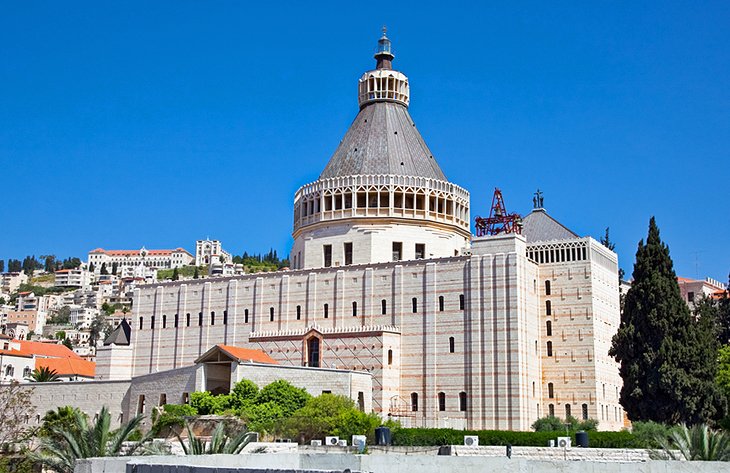
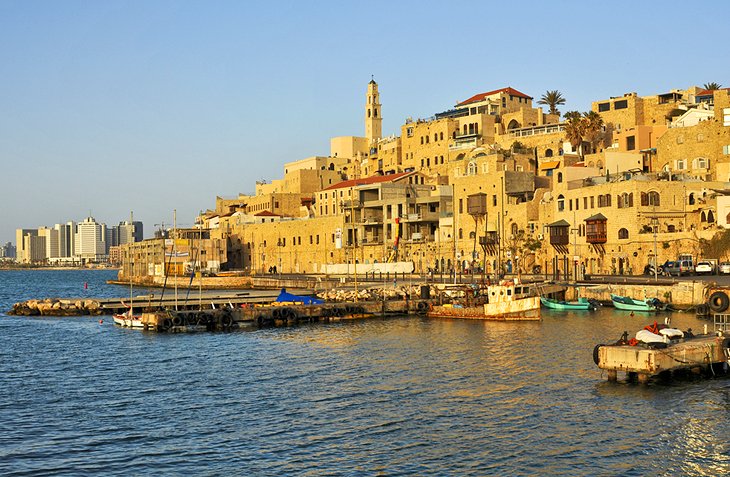
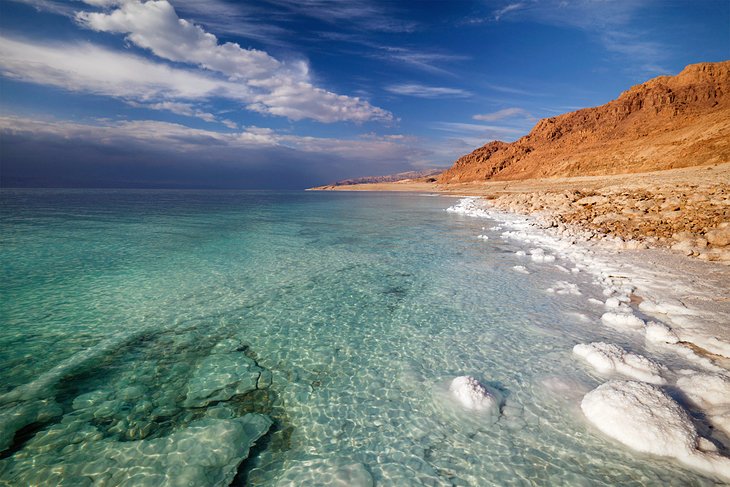
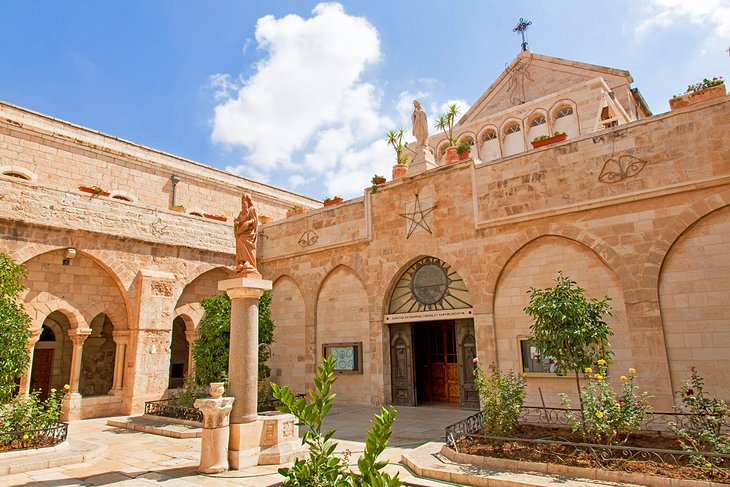
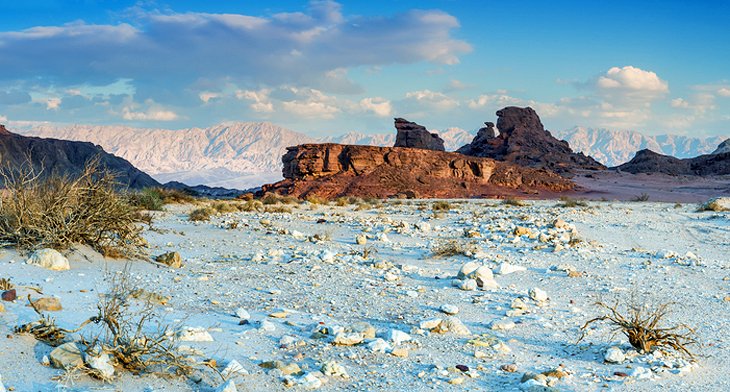
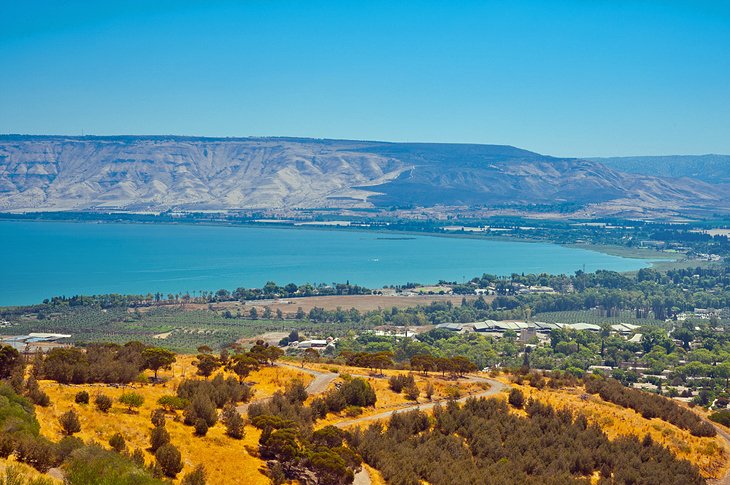
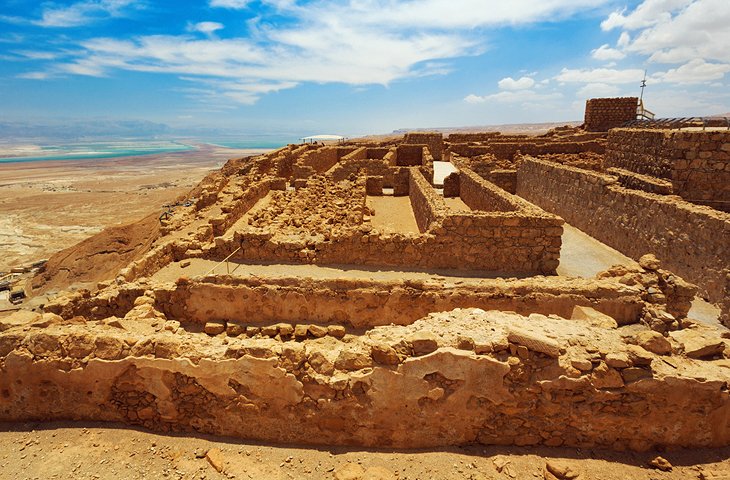
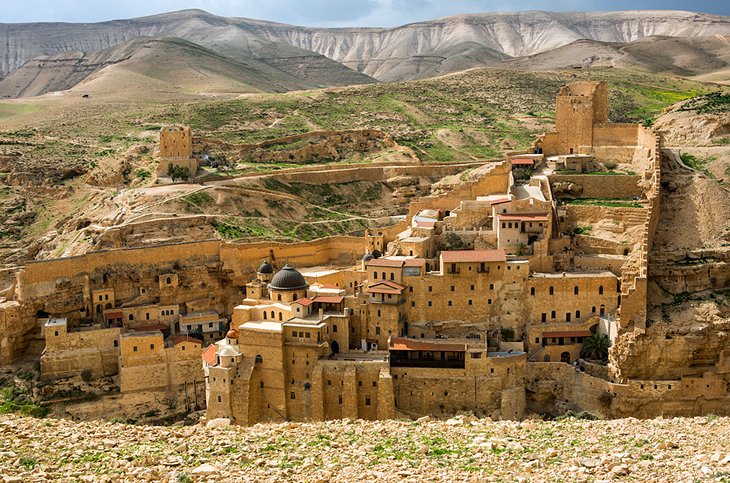
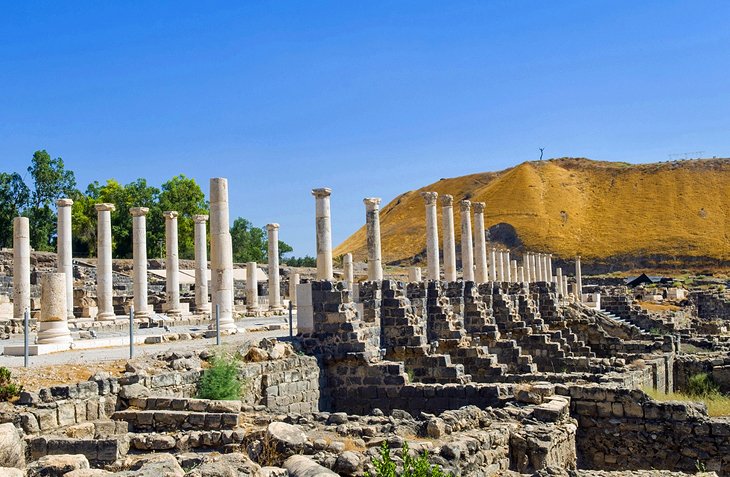
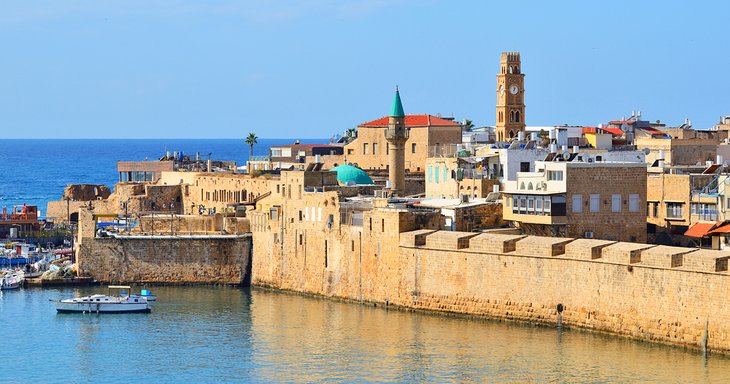
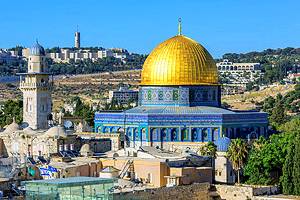
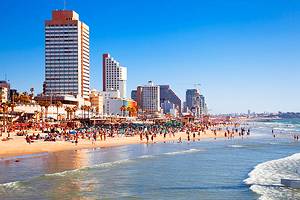
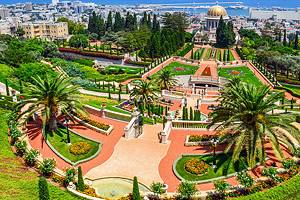
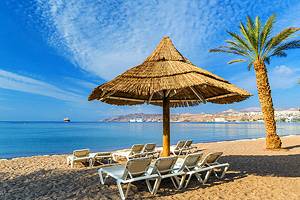
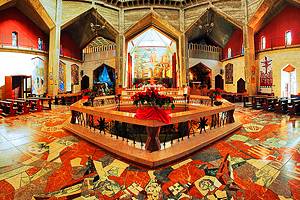

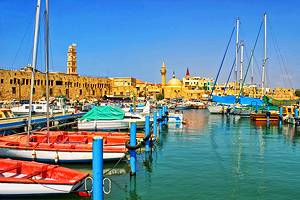
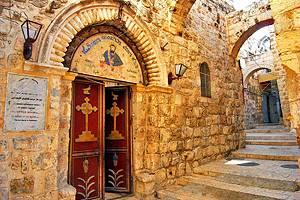
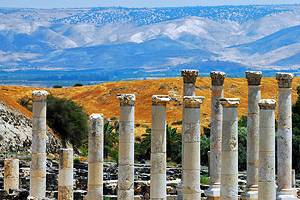
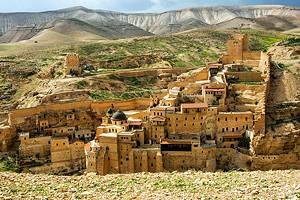
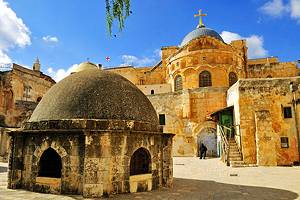
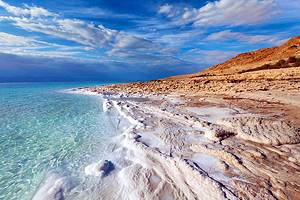
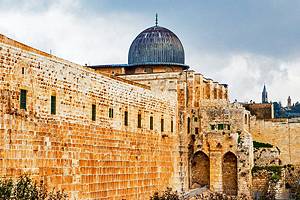
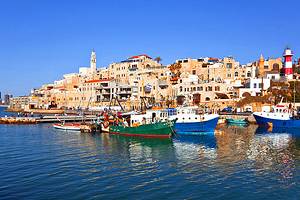
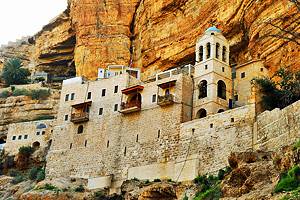
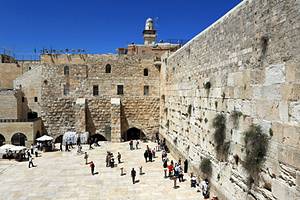
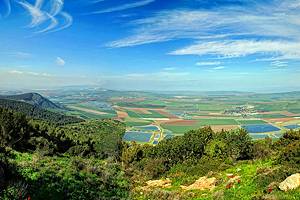
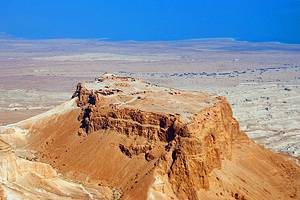
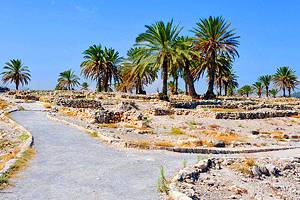
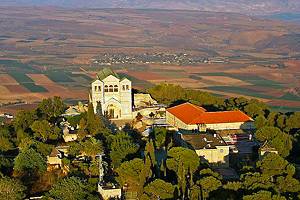
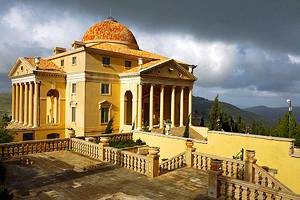
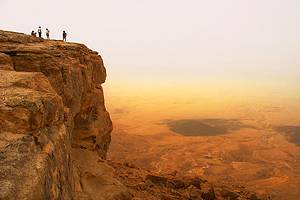
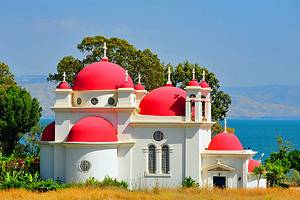

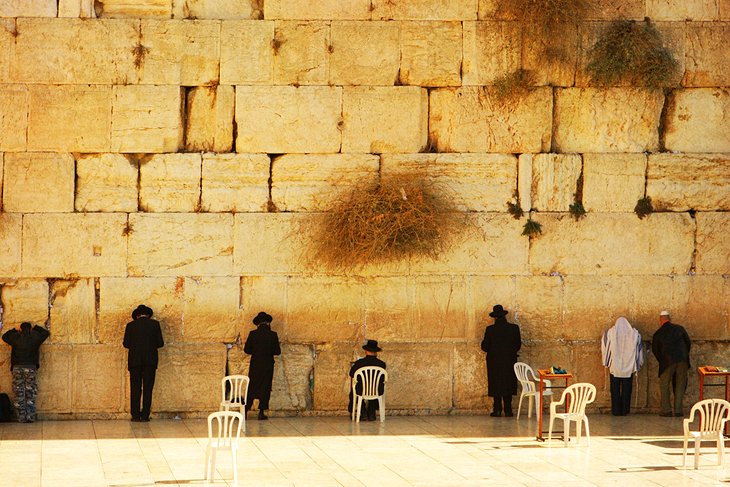
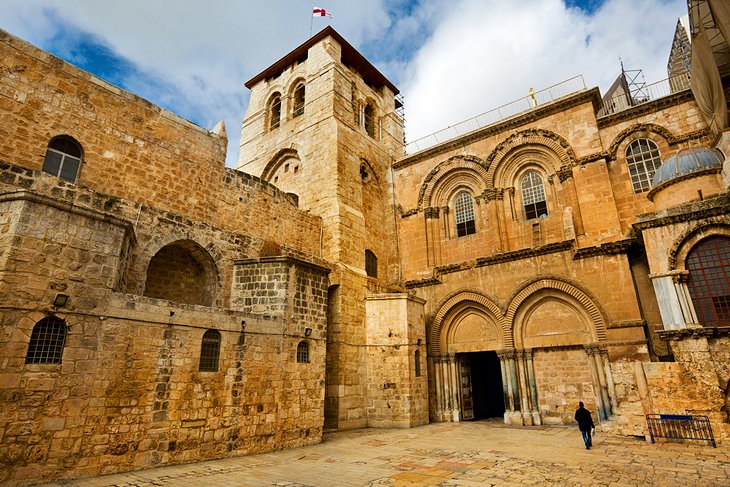
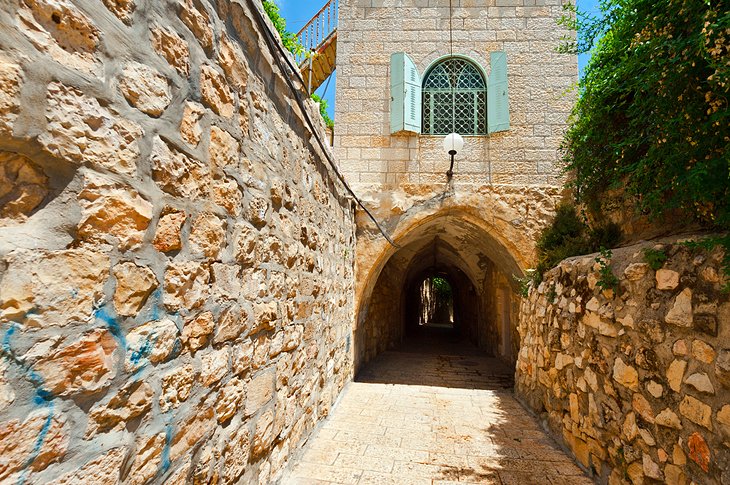
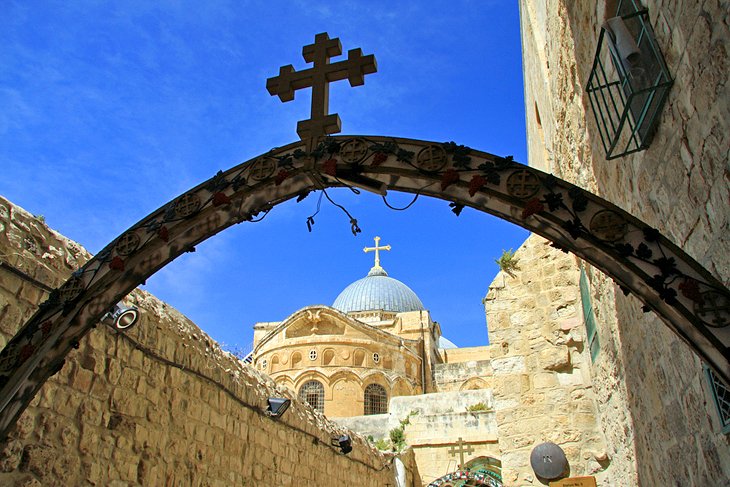
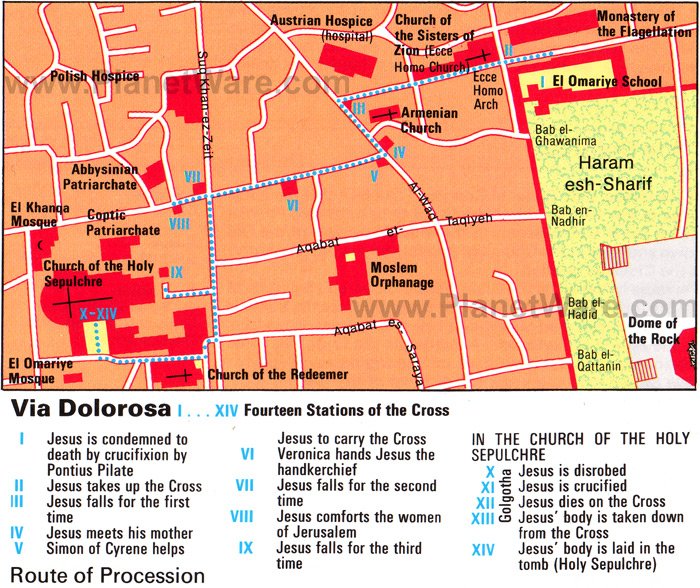
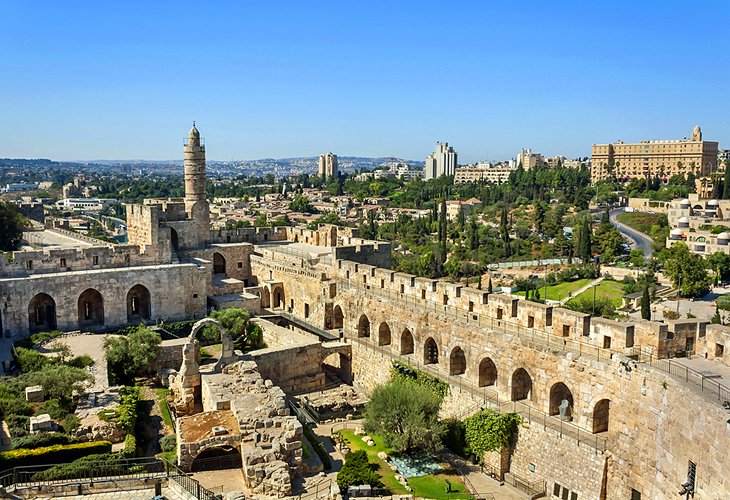
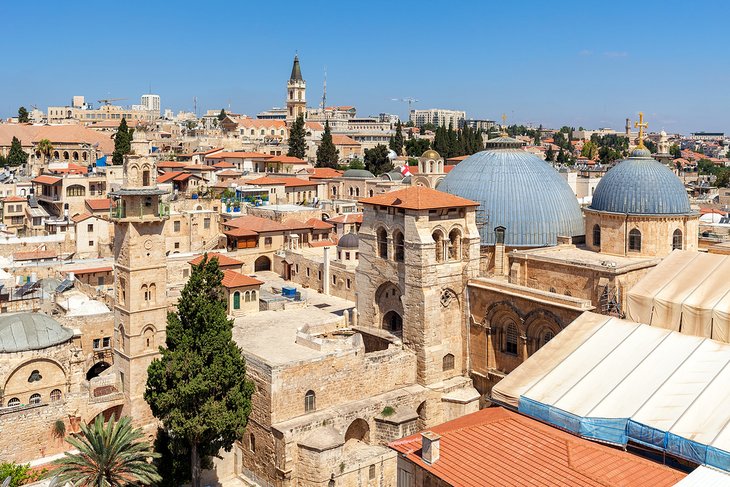
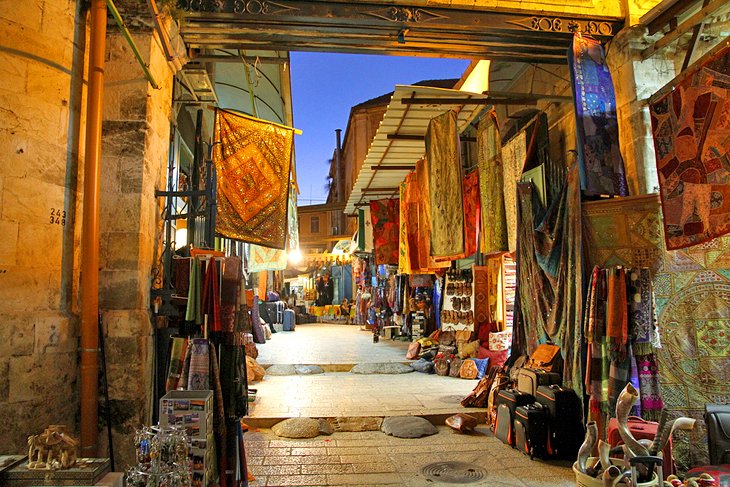
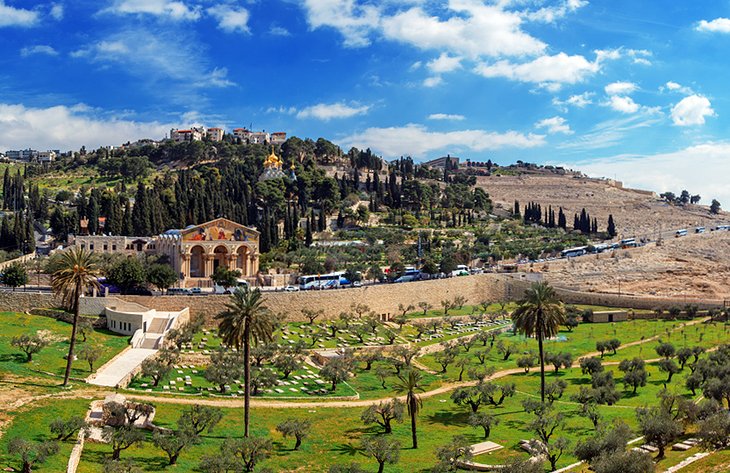
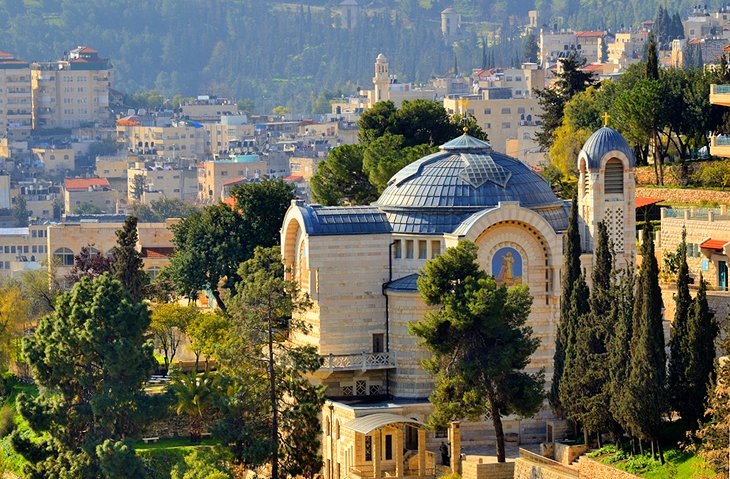
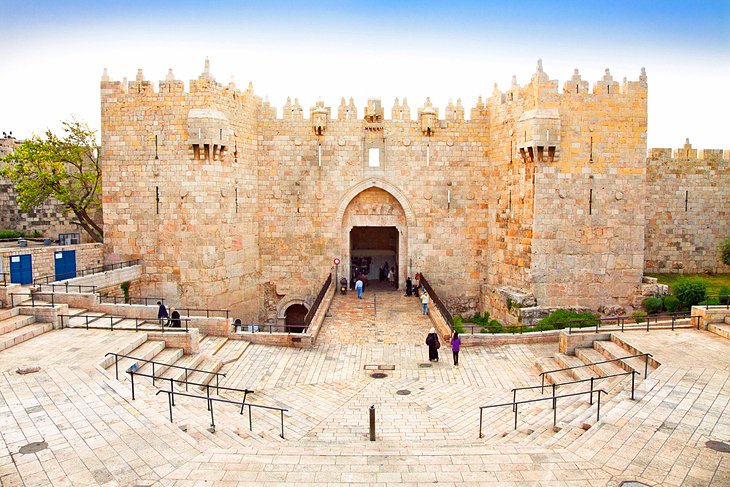
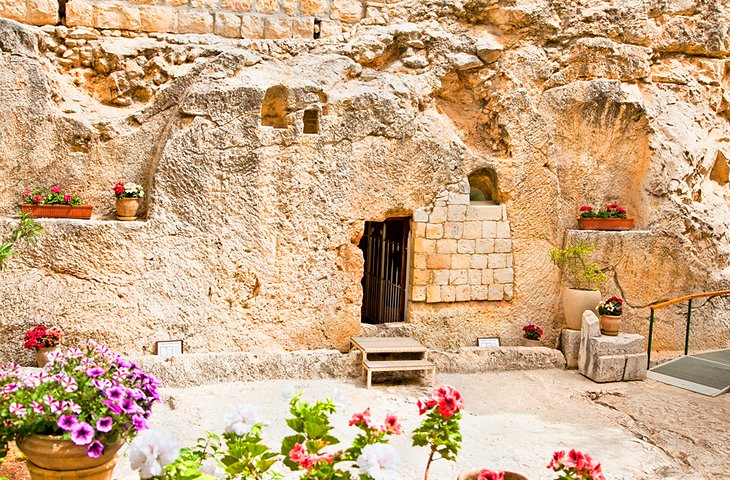
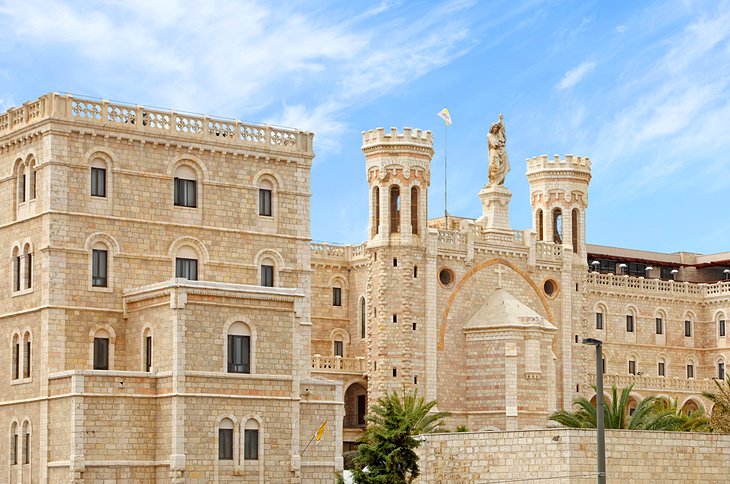
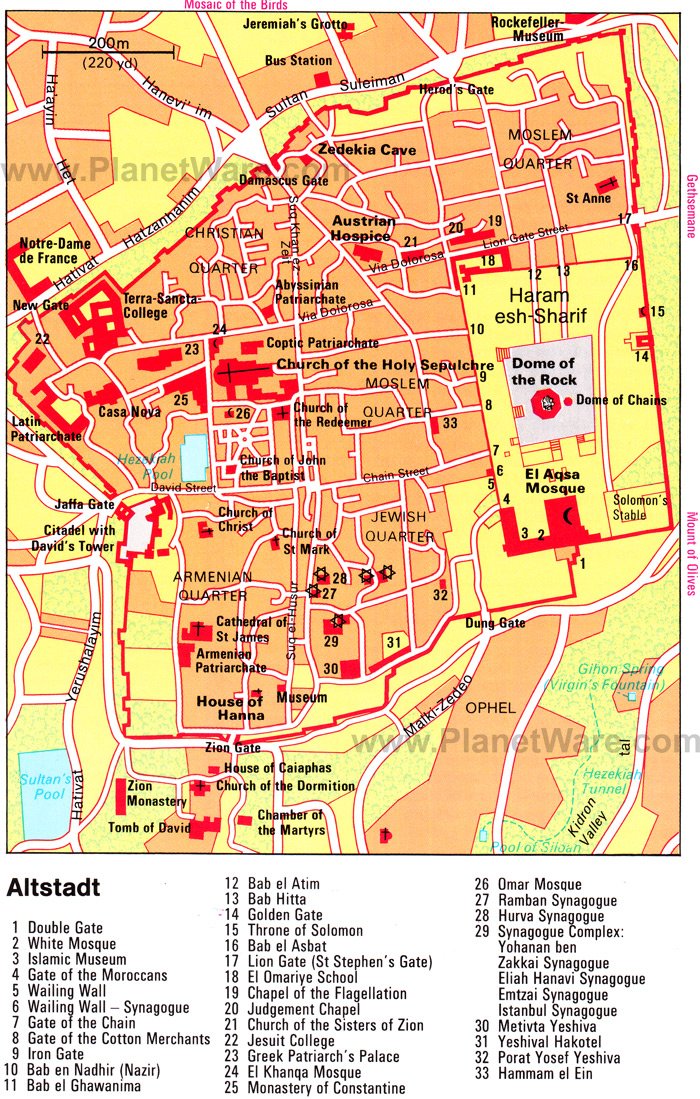
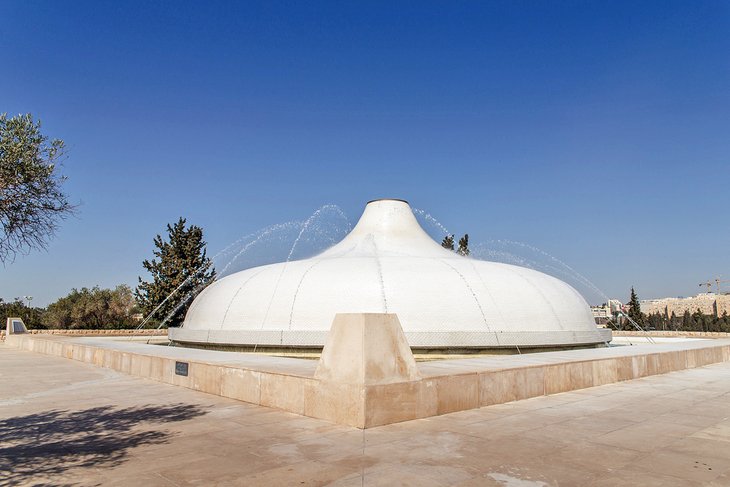
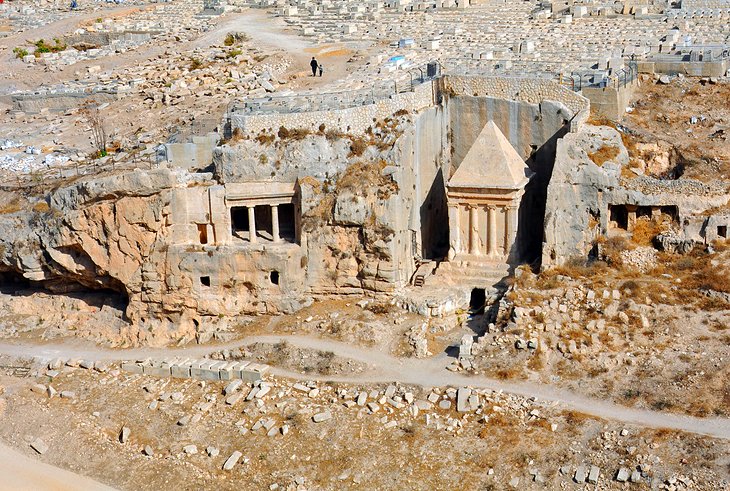
No comments:
Post a Comment